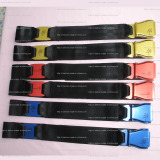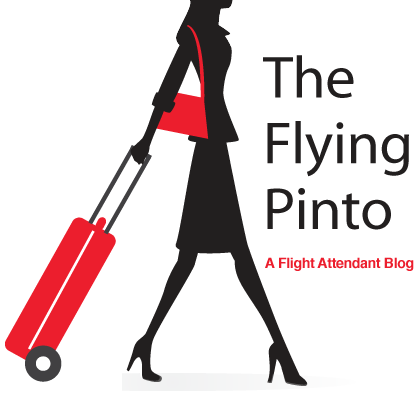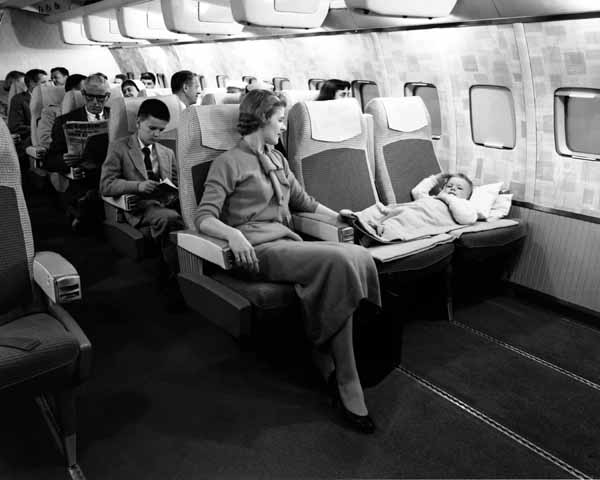Patrick Smith the airline pilot who authors the column, “Ask the Pilot” on Salon.com recently talked about the fasten seat belt sign on commercial aircraft. Here is an excerpt from the post:
“Covering the recent taxiway collision at Kennedy airport between an Air France A380 and a regional jet, I emphasized the importance of staying seated after landing.
Perhaps the most important take-away, I wrote, is paying heed to that old, in-one-ear-and-out-the-other dictum from the flight attendants: Please remain seated with your seat belts securely fastened, until the plane is parked at the gate and the seat belt sign has been turned off.
Well, maybe, but a reader from Seattle wrote in with an interesting comment, pointing out the airlines’ contradictory enforcement policies when it comes to the seat belt sign. On the ground, taxiing along at only a few miles per hour, the rule is enforced with a certain ferocity, as anybody who has mistakenly reached for his carry-ons after landing can attest. During flight, on the other hand, it’s hit or miss. People amble about, to and from the lavatories, regardless of what the sign says. More often than not, nobody seems to mind.”
I wanted to add the flight attendant’s perspective to this. The reason it is so important to be buckled in during taxi, take off and landing is because this is when the majority of airplane incidents and accidents are most likely to take place. In fact flight attendants are only allowed to be up at this time for safety related duties, i.e., for safety demonstration, compliance checks or responding to emergencies. I believe that the reason why we as flight attendants are seen as enforcing the seat belt sign during this phase of flight is because we all need to be seated. Once in the air, as the article states it’s important to be buckled while seated because unexpected turbulence, including severe, can hit anytime. The reason that flight attendants don’t seem to be enforcing this policy as much in the air is because people are up and about when the sign goes on and others continue to get up. The pilots usually make the announcement, a flight attendant follows up with another announcement and we do a compliance check by walking through the cabin and informing everyone that the seat belt sign is on. At this point passengers have been informed that the sign is on and that they should be seated. I used to love to say that flight attendants are informers and not enforcers, but as you know things have changed in the industry and our role has evolved to reflect that. But, you’ve flown, you see how many passengers are up when the seat belt sign is on…even after we’ve “informed” them….can you imagine how ridiculous it would be if we started to enforce this? There would be authorities meeting EVERY flight upon arrival! I think some situations need a common sense approach and this is one of them. And, like Patrick I’m not condoning ignoring crew members instructions! But as a crew member I can’t militantly force every person to sit down when they really have to go, although I will “inform” you to be seated.
To read the rest of Patrick’s post head to Salon.com
To learn more about what a flight attendant’s responsibilities are read, “Flight Attendant Safety Check List”
 Featured images courtesy of Foxnomad.com and Yahoo.com
Featured images courtesy of Foxnomad.com and Yahoo.com



 Facebook
Facebook Twitter
Twitter RSS
RSS Email
Email
Nice post and yes, I saaw Partick’s original a few days ago. After 40 years of being Self Loading Cargo, I know enough to keep my SB ON, save some necessary movement at an allowed time. It it not restrictive or painful and that lose SB has saved my butt (or my head?) more than once. Unless I must get up for something, mine’s always been on, for Forty+ Years!
-CG
If someone refuses to coply with the seatbelt sign in flight I can’t physically stop them from doing what they want to do, but I make it very clear that it is at their own risk and to be careful if they insist on getting up.
I believe in having seat belts on at all times regardless. However, there are certain biological needs that may prevail when the seat belt signs are on. No one in their right mind will brave to stand up in severe turbulence, but the sign these days seems to be on for longer times and with little or no turbulence. Technology, on board, allows the pilots to locate areas of potential turbulence and act upon the information. Then some airlines actually invite people to move around the cabin, for DVT and wellness issues. Most will ask you to remain in the cabin zone you are seated in, on a US carrier you go to another zone at your own risk.
I agree that common sense should prevail during the cruise segment of the flight and I hate to see FAs becoming more and more enforcers.
I always wondered about that. As someone who “follows the rules” I keep my seatbelt on all the time but am usually seated next tot he guy who popping up and out of his/her seat countless time during the flight regardless of which sign is lit up.
Hope all’s well with you Sarah. Cheers, jj
Our airline has a policy that whenever the seatbelt sign is turned on during cruise for turbulence, passengers AND cabin crew MUST be seated with seatbelts fastened. We make a PA saying we will commence service as soon as it’s okay by the Captain. If a pax gets up to go to the bathroom, we have usually locked off the doors and we aren’t allowed up to unlock it. If it isn’t locked, then they enter at their own risk.
I was on an international flight about a month back where the “fasten seatbelt” sign was not turned off for the entire flight despite no turbulence. Normally I’m happy to comply with the sign, but after 6 hours, I considered the lesser of the two evils was to get up and go to the lav rather than continuing to comply.